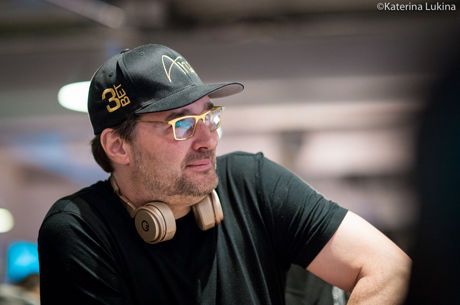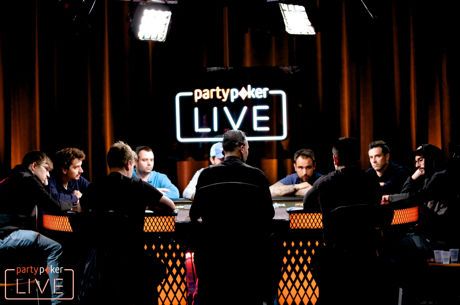Hand Review: A Close ICM Shove-or-Fold Spot at a Final Table
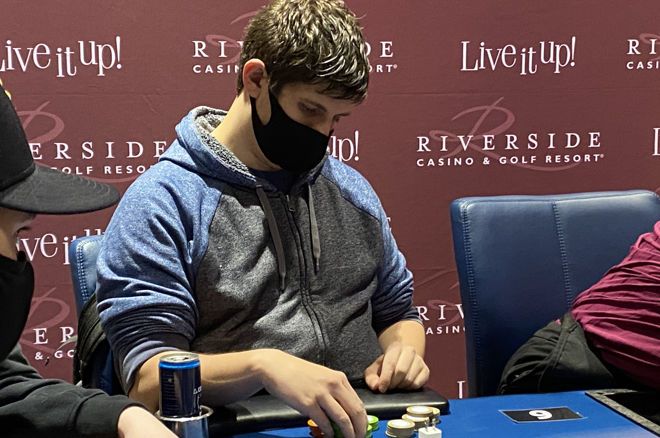
Table Of Contents
Covering live poker tournaments for a living affords me the opportunity to see countless thousands of hands played out, many of which offer interesting and potentially valuable insights into how players — both amateurs and professionals — play the game. In this ongoing series, I’ll highlight hands I’ve seen at the tournaments I’ve covered and see if we can glean anything useful from them.
The Scene
A few months back, I got the assignment to drive a few hours into Iowa to cover Mid-States Poker Tour Riverside $1,100 Main Event.
As it happened, my good friend Nick Pupillo would make a deep run to the final table and was still in it when six players remained. He'd already locked up $31,716 and was playing for $162K up top, so the stakes were getting big for everyone involved.
While Pupillo had the second-shortest stack with about 2.4 million at 60,000/120,000/20,000, he was still far ahead of Renato Spahiu, nursing just 500,000 or so and about to be in the big blind.
Thus, Pupillo found himself in an interesting spot when Jovan Sudar, an active player with a big stack, opened in front of him.
The Action
Spahiu folded and Sudar, second to act, made it 275,000 to go. The next player folded and action was on Pupillo on the button. He counted down his stack then shoved all in. The blinds folded but Sudar quickly called.
Sudar: K♦K♠
Pupillo: 7♥7♦
The board ran 5♦4♦10♥10♣Q♣ and Pupillo collected a sixth-place payout while Sudar ascended to co-leading status with eventual winner Daniel Sepiol.
Concept and Analysis
In the days following this hand, Pupillo and I discussed this hand at length along with several friends as we wondered if he stacked off too light given how short Spahiu was in early position. It's worth looking into as it seemed like a close decision given the ICM factors at play.
First, let's take a look at the approximate stacks left in the tournament, as well as what their stacks are worth in dollars according to a free ICM calculator:
| Player | Stack | Value | Current Position |
|---|---|---|---|
| Daniel Sepiol | 7,700,000 | $108,752 | Big blind |
| Jovan Sudar | 5,000,000 | $92,863 | Hijack |
| Jason Crews | 3,150,000 | $77,843 | Small blind |
| Kyna England | 2,800,000 | $74,384 | Cutoff |
| Nick Pupillo | 2,400,000 | $70,099 | Button |
| Renato Spahiu | 500,000 | $41,310 | Under the gun |
It may surprise you — it certainly did I — that Pupillo's stack was worth just shy of third-place money in this spot. That highlights the danger of busting out next when there's a difference of almost $40K between his stack value and the next payout.
That creates an interesting dynamic with Pupillo's hand. While he undoubtedly has a good hand to shove for chips over a wide opener — Sudar had raised as light as queen-three suited in late position — what's the play given that there's an extremely short stack that will almost certainly be all in within the next orbit?
Luckily, there are models we can turn to as a reference in these spots that can help deal with the ICM factors and produce a recommended play based on the expected value of shoving and folding. One such model is ICMIZER, which offers a limited number of free outputs. I entered the parameters of this hand to see what the model thought about shoving pocket sevens here. Here's what it spit out:
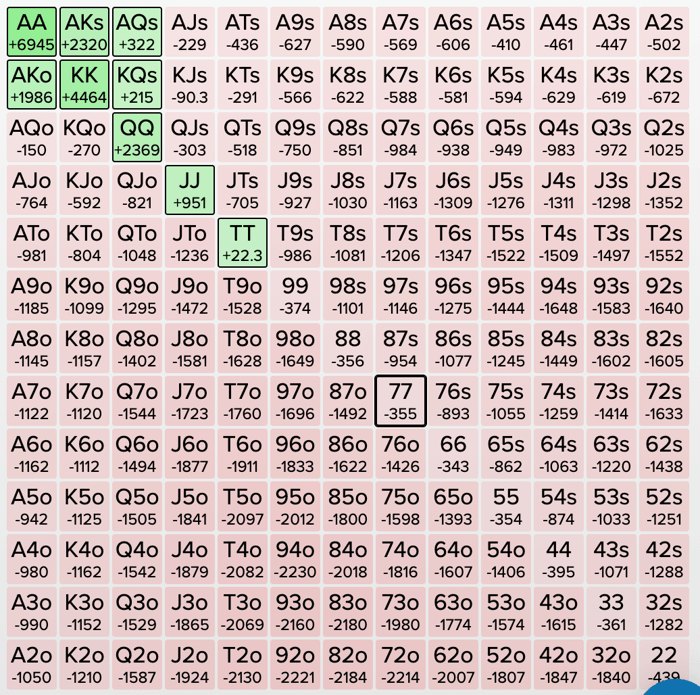
The numbers under each hand are the dollar figures expected when shoving these hands over Sudar's open. The model believes Pupillo's shove was a losing one costing him an average of -$355. The EV of a shove is $70,602 while the EV of a fold is $70,957.
According to the model, the cutoff for shoving profitably here is quite a bit higher as pocket tens is the weakest pair that should be shoved, and even that nets only a tiny profit of $22. The model thinks he should be incredibly selective here, shoving only ace-king from the offsuit hands, king-queen suited, ace-queen suited and ace-king suited along with tens-plus.
One thing to note, however, is that the model assumes Sudar is opening a GTO range of the top 19% of hands. That's going to be a pretty tight range consisting of pairs 66+, most offsuit Broadway combos, all but the weakest suited aces, A9o+ and suited hands down to ten-nine and king-seven. It's pretty easy to imagine Sudar was opening wider than that, which means the shove should win more than the model expects because it wins the pot without showdown more often.
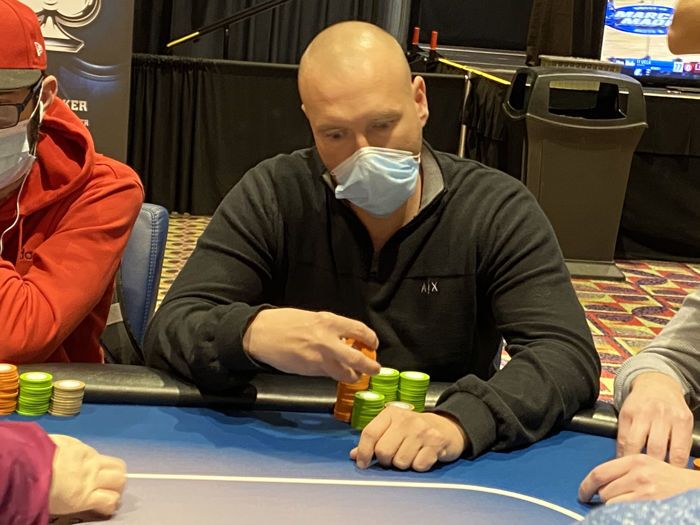
Therefore, as we initially predicted, the decision seems very, very close, probably not winning or losing much either way.
Could flatting be an option here? Pupillo's stack was a bit short to be looking to play much postflop, but I think it might be better than shoving given that he has position on Sudar. He's certainly inviting some squeezes from the big stack in the big blind, but he'll be much less likely to lose his whole stack, and sevens don't need to be a pure set mine as they will win a decent amount unimproved.
While there isn't a clear-cut "right" answer in this spot, I still think it's interesting to look at the model's output and take stock of just how much a super-short stack being present at a final table changes things. A single open by a covering stack instantly reduces the "correct" shoving range in Pupillo's seat to a tiny fraction of hands, just 4%.
That's the power of ICM when the big money jumps are at play, and it's something to be cognizant in any big decision at a final table.

